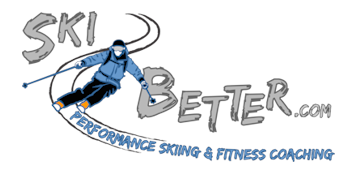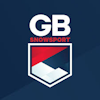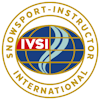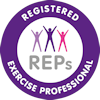Some of the questions I often get asked are:
- how do I get better?
- how do I carve?
- how fit do I need to be?
- how do I ski faster?
- is skiing technical?
- am I a technical skier?
- what is technique?
- do I need to learn good technique?
- why am I not getting better?
At the core of many of these questions, is the acquisition of skill. This has been written about by many skiing gurus over many years one of whom is our own John Shedden. He talks about three major factors Emotion, Perception and Technique. These three factors are interrelated, your perception of what and how you are about to ski is governed by your own perception of your personal limits. This in turn will affect your emotional state. Here are some examples, ranging from feeling 'over the top' to 'being on the wrong slope' - I have deliberately not mentioned skill or technique:
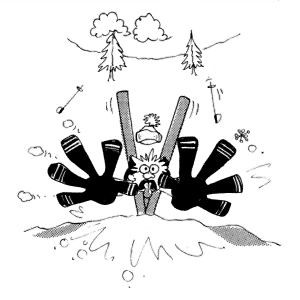
- beyond the limit (whoops, oh dear),
- I'll survive (blasé, or over confident),
- I've won (elation),
- on the limit (exciting),
- going for it (inspired),
- can I go fast enough to win? (challenging),
- can I get down there at that speed? (challenging)
- effortless (just great fun),
- no problem (comfortable),
- never done it before (constrained),
- I can't go that far (unfit, tired),
- I can't go that fast (unfit, tired),
- can't let the rest down (meeting others expectations)
- can't do it, won't do it (frightened),
Be honest, we've all been in situations where we have experienced these feelings and will have them again in the future. Maybe many of them in one run! And we learn from them. This learning alters our perceptions of ourselves both positively and negatively, depending on the outcome of our performance, our own feedback and that from others. The feelings listed can be experienced on snow or in the training situation, although this can be managed to a degree by coaches and instructors. If are going to give feedback to others about their skiing be careful what words you use and when you tell them. Like wise when you are analysing your own skiing don't be over critical, be mindful of the negative but build on the positive. After all mistakes will happen, please take them in the context of your total performance, one fall at the end of a superb run does not mean that the whole of the run was bad, or that you are having a bad day!
Learning to ski, in a way, is a bit like learning to drive a car. Your first four wheel self-driving experience is probably the kiddies buggy or peddle car. We sit in the seat behind the steering wheel, which turns the front wheels so that we can steer around objects. We can control our speed or stop it by either crashing into objects or use of the foot brakes, which also conveniently provide propulsion and acceleration. Because of our limited abilities to control the buggy, learning takes place in a controlled environment where we can come to little harm, inside the house, in the garden etc - shame about the furniture and the lawn!
Once we have grownup a bit and matured sufficiently, we are allowed to have driving lessons probably with the local driving school. To drive the car we are taught about what the car can do, how it does it and how we can control it in different situations - after all they can be dangerous in the wrong hands! This is the technical stuff. We then start to drive the car under instruction and in doing so probably go through the some of the emotional feelings detailed above. As the lessons progress we experience night driving, wet driving, fast driving, emergency stopping, manoeuvring, keeping our speed a certain levels, obeying signs, etc. We are then examined and hopefully pass having attained the right skill level. When we relate this to skiing this is really the basics and is like becoming a skilful snow plougher.
We are then let loose on the open roads, where you begin to learn from experience - other drivers doing unexpected things, high speed roundabouts, drivers disobeying the rules, looking after other passengers. Likewise in skiing you can now get about the mountain on the greens and blue slopes, negotiate lifts etc. - only to find your navigation is not as good as it could have been, the last lift beckons, you have to rush. The run is only a "basher" width across due to a fall of new snow over night! You are being challenged, you have to cope, go another way, retreat, or be rescued. Being challenged goes on all through our ski career sometimes by our own choice, sometimes by an instructor, and sometimes it is forced upon us by events.
To have more fun and ski with others, most skiers need to improve, we need to go faster, ski for longer and cope with different terrain. All this requires improved technique mainly by moving on to parallel skiing, preferably of the carving variety, thus making skiing much more effective and efficient. This leads on to developing the ability to ski on more challenging slopes and being comfortable in varying snow conditions. Invariably this means developing your technique and awareness to a level where you have choice and can adopt your technique to match your perceived requirements. Your perception will change as you ski and your technique should change as you wish it to. Once at this level it is like you have been driving for years and can be awarded a no claims bonus!
To move our skiing even further and to have more fun, we need to increase our abilities to cope with different snow conditions (off-piste), steeper terrain (blacks), bumpier terrain (mogul fields), fast accurate skiing (possibly race courses). This is the equivalent to taking up off-road driving, touring car racing, rallying or even driving trucks. You would not dream of doing any of these without proper training would you? You would find a specialist driving school. At these schools you will be taught about the different aspects, tactics and technical requirements. In order to ski at these higher levels you need similar information. This can be gained from several routes - reading books, trial and error, doing specific training, etc. Preferably all - however the best way to learn is to engage all of your senses in skiing specific lessons i.e. do it. Don't just leap in though - work on:

- improving your technique - to a point where it is natural to you
- train,train, train - tell your coach what you want to achieve
- ask for foundation based training - work on core techniques
- do sport specific exercises to improve your fitness - it does count,
- fitness,
- strength,
- flexibility and,
- endurance level's,
In my mind skiing technique is not a case of different techniques and which one shall I employ - like changing your Mini to a Land Rover. I like to see one natural graceful movement fluidly linking one turn to another in an effective manner. It is therefore a matter of varying your controls to cope. Such as how we stand on tilted skis, the adjustments of power, lean, and flexibility of our legs - how we manage our our body as we move over or through the snow whilst still maintaining excellent balance. We have all seen this in great skiers - we can see athleticism, power, control, effectiveness - this is WOW skiing both to the performer and the observer. The skier is so aware of what they are skiing on, where they are going and how they are making the turns - they are at one with the environment. We dream of this type of run - don’t we? To get to this level needs dedication.
My advice is . . . .
Learn as much as you can about technique but:
- try and keep things simple - you should not have to refer to a manual whilst you are skiing!
- don't get hung up on it - it is amazing how much you learn subconsciously though sight & feel
- talk about it with others - what they do, how did they do that!
- temper it with your own experience.
Have fun Rog
